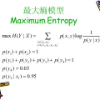Social gravity law widely exists in human travel, population migration, commodity trade, information communication, scientific collaboration and so on. Why is there such a simple law in many complex social systems is an interesting question. Although scientists from fields of statistical physics, complex systems, economics and transportation science have explained the social gravity law, a theoretical explanation including two dominant mechanisms, namely individual interaction and bounded rationality, is still lacking. Here we present a free utility model, whose objective function is mathematically consistent with the Helmholtz free energy in physics, from the perspective of individual choice behavior to explain the social gravity law. The basic assumption is that bounded rational individuals interacting with each other will trade off the expected utility and information-processing cost to maximize their own utility. The previous explanations of the social gravity law including the maximum entropy model, the free cost model, the Logit model and the destination choice game model are all special cases under our model. Further, we extend the free utility model to the network. This model not only helps us to better understand the underlying mechanisms of spatial interaction patterns in complex social systems, but also provides a new perspective for understanding the potential function in game theory and the user equilibrium model in transportation science.
翻译:社会重力法在人类旅行、人口移徙、商品贸易、信息通信、科学合作等方面广泛存在。为什么在许多复杂的社会系统中存在这样一个简单的法律,这是一个有趣的问题。虽然统计物理学、复杂系统、经济学和运输科学领域的科学家解释了社会重力法,但目前仍然缺乏理论解释,包括两种主要机制,即个人互动和界限合理性。在这里,我们提出了一个自由实用模型,其客观功能从数学角度上与赫尔默尔茨物理自由能源相一致,从个人选择行为的角度来解释社会重力法。基本假设是,相互交织的理性个人将从预期的效用和信息处理成本中交换,以尽量扩大其自身的效用。以前对社会重力法的解释,包括最大灵本模型、免费成本模型、Logit模型和目的地选择游戏模型都是我们模型下的特殊案例。此外,我们把免费的实用模型扩大到网络上。这一模型不仅有助于我们更好地了解复杂的社会系统空间互动模式的基本机制,而且还为理解游戏理论的潜在功能和用户模式提供了新的视角。




